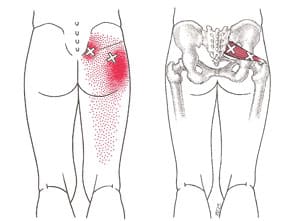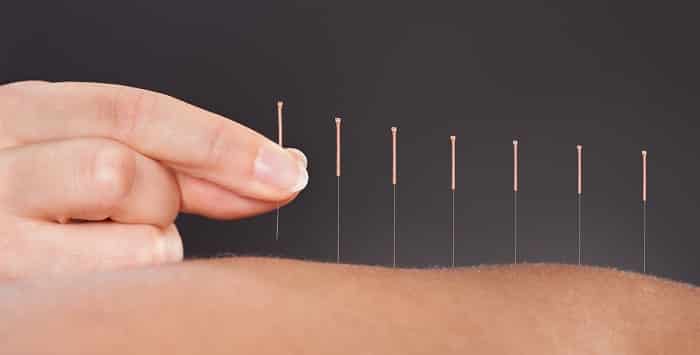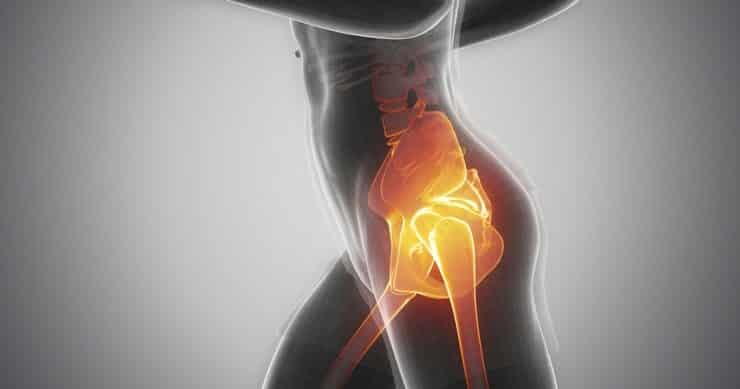Piriformis syndrome and fibromyalgia: The deep buttock pain
Last updated 23/02/2024 by The pain clinics - Interdisciplinary Health

Piriformis syndrome and fibromyalgia: The deep buttock pain
Piriformis syndrome and fibromyalgia appear to have some relationship. Among other things, one can see a higher incidence of piriformis syndrome among people with fibromyalgia - and this may be due to several known reasons related to the latter chronic pain syndrome.
Piriformis syndrome is a diagnosis that involves irritation or pinching of the sciatic nerve deep behind the seat and towards the buttock.¹ Such irritation can give rise to deep seat pain that can be felt as stabbing, burning or aching - and the symptoms can follow the sciatic nerve down the leg. In addition, one may experience tingling, numbness and sensory changes associated with the nerve distribution. In the article, we will also take a closer look at possible reasons why people with fibromyalgia seem to be more frequently affected.
Tips: Later in the article shows chiropractor Alexander Andorff you a gentle stretching program against piriformis syndrome, consisting of 4 exercises, which can help you dissolve deep and tense gluteal muscles. We also give advice on recommended self-measures, such as relief with ergonomic seat cushion and sleeping with pelvic cushion with fastening strap. All product recommendations open in a new browser window.
Piriformis syndrome: When the sciatic nerve is pinched in the seat

The sciatic nerve in the seat is approximately the nearest neighbor to the piriformis muscle. The main task of the piriformis muscle is to rotate the hip outwards when you want this - and because it attaches both in the sacrum (above the tailbone) and out towards the hip - an irritation or malfunction in this could lead to pinching of the sciatic nerve. These pains can often resemble other types of nerve irritation, such as lumbar stenosis, lumbar prolapse or pelvic joint problems. Studies have shown that up to 36% of sciatica cases are due to piriformis syndrome.²
- The pain is often aggravated by prolonged sitting or the wrong sleeping position
Piriformis syndrome usually causes worsened symptoms if you sit - which, of course, puts increased pressure on the coccyx and the sitting joint. In addition to this, patients with this diagnosis will also experience worsening if they sleep on the affected side. Naturally enough, it therefore becomes important to take measures on your own in everyday life that relieve the area - including the use of shock-absorbing coccyx pad. Such an ergonomic self-measure will give the area much-needed relief and recovery. When you sleep you can consider using one pelvic cushion with fastening strap.
Our tip: Use a tailbone cushion when sitting (link opens in new window)
In case of nerve irritation in the seat, it is, perhaps not surprising, that it is very important to relieve the sciatic nerve and the piriformis muscle. By using a shock-absorbing coccyx pad you will be able to sit more correctly and avoid incorrect strain on the area. This provides, over time, a basis for the area to receive sufficient restitution - so that the damage can heal and get better. Press here to read more about our recommendation.
To sleep with it'bad side up' can provide relief

The basis for clinicians often recommending patients with piriformis syndrome to sleep with the painful side up is that this results in less pressure and better circulation in the area. Use of pelvic cushion with fastening strap, as used during pregnancy, can contribute to an even better and more ergonomic sleeping position.
Our recommendation: Try sleeping with a pelvic pillow with a fastening strap
The reason why pregnant women are recommended to sleep with pelvic floor pillow is because it provides optimal relief for the back, pelvis and hips. In addition to the knees. But that does not mean that this sleeping position is only suitable for pregnant women. On the contrary, it is extremely suitable for everyone, and can contribute to a more ergonomic sleeping position. You can read more about our recommendation here .
– Better when moving and after stretching
Another characteristic sign of piriformis syndrome is that it often feels better when you are moving or walking. Then to "pull yourself together again" when you are calm again. The basis for this improvement is, among other things, the variation in the load when we are in motion - and that the blood circulation contributes to the muscle fibers in the seat and hip muscles being more flexible. In the same way, many people find that they get a temporary improvement when they perform stretching exercises and mobility exercises.
Our clinic departments at Vondtklinikkene (click here for a complete overview of our clinics), including in Oslo (Lambert seats) and Viken (Eidsvoll Sound og Raw wood), has a distinctively high professional competence in the investigation, treatment and rehabilitation of pain in muscles, tendons, nerves and joints. Toe contact us if you want help from publicly authorized therapists with expertise in these fields.
Fibromyalgia and the relationship to piriformis syndrome

(Figure 1: The piriformis muscle)
Fibromyalgia is a chronic pain syndrome that characteristically causes widespread and widespread pain in connective tissue and soft tissue all over the body. The very name fibromyalgia can actually be divided into two words. Fibro - i.e. connective tissue. And myalgia – muscular pains. The pelvis, hips and lower back are often known problem areas for this patient group. In these areas we find a number of the larger muscle groups, which include the gluteal muscles (buttock muscles), piriformis and thigh muscles. Here it is important to mention the hamstring muscles on the back of the thighs, as these attach directly to the sitting bone and the sitting joint in the seat.
Muscle tension and muscle contraction in fibromyalgia
Muscle pain and muscle tension are two well-known symptoms of fibromyalgia. This may be due, among other things, to the fact that many people with fibromyalgia have higher activity in their nerve cells - and a higher content of the pain nerve signaling substance substance P (read also: fibromyalgia and substance P). Over time, such muscular tension can contribute to the muscles becoming less flexible, shorter and more sensitive to pain. This also includes the piriformis muscle - which can therefore put direct pressure on the sciatic nerve inside the seat.
The pain pattern of piriformis
If we take a look at figure 1, which shows the pain pattern and attachment points of the piriformis muscle, we can see that these primarily go in the buttock and upper thigh. But here it is incredibly important to mention that this is the pain pattern of the piriformis without regard to decompression of the sciatic nerve. When we add irritation or pressure to the sciatic nerve, the pain pattern can change significantly. In the case of nerve irritation, the symptoms and pain will be worse and often there will also be sensory symptoms in addition.
Treatment of piriformis syndrome

There are a number of treatment methods that can contribute to the holistic treatment of piriformis syndrome. The first priority is to relieve and reduce the pressure on the sciatic nerve. Here, a combination of treatment techniques is often used to achieve functional improvement and pain relief. This may include:
Intramuscular acupuncture
Laser Therapy
Joint mobilization for the lower back and pelvis
Muscular techniques and massage
Traction bench (popularly called «stretching bench")
Shockwave Therapy
As mentioned, muscular tension and soft tissue pain are known problems in patients with fibromyalgia. It is therefore not particularly surprising that many people with fibromyalgia need regular physical therapy for stiff joints and sore muscles. Treatment with muscular techniques, including massage, can show a positive effect in the form of reduced muscle pain and better mood.³
- Documented positive effect of dry needling (IMS)
At the Vondtklinikken, all our therapists have professional expertise in intramuscular acupuncture. Meta-analyses, the strongest form of research, show that treatment with needles directed at trigger points (myofascial muscle knots) can produce less pain, reduced anxiety and depression, less fatigue and improved sleep. Here it is important to note that the treatment had a short-term effect - and thus had to be repeated with a certain amount of time in between.4
- Pain clinics: We can help you with pain in muscles and joints
Our publicly authorized clinicians at our affiliated clinics The pain clinics has a distinctive professional interest and expertise in the investigation, treatment and rehabilitation of muscle, tendon, nerve and joint ailments. We work purposefully to help you find the cause of your pain and symptoms - and then help you get rid of them.
Investigation and examination of piriformis syndrome

We have previously mentioned how several other diagnoses can cause similar symptoms to piriformis syndrome. Through clinical examinations and functional tests, where one investigates for disc damage and nerve tension, one can gradually arrive at the diagnosis. If it is medically indicated, our clinicians have the right to refer for diagnostic imaging (including MRI examination).
Summary: Piriformis syndrome and fibromyalgia
That people with fibromyalgia are more frequently affected by piriformis syndrome is not particularly surprising. Especially when we take the chronic muscular tension into account. Over time, this causes the muscle fibers to become shorter and less elastic. Damaged tissue also occurs inside the muscle fibers - i.e. soft tissue with reduced load-bearing capacity and higher pain sensitivity.
VIDEO: 4 stretching exercises against piriformis syndrome
In the video above, chiropractor Alexander Andorff demonstrates 4 stretching exercises against piriformis syndrome. The purpose of the exercises is to provide a basis for more flexible muscles and to reduce the pressure on the sciatic nerve deep in the seat. This exercise program can be performed daily.
Join our rheumatism and chronic pain support group
Feel free to join the Facebook group «Rheumatism and Chronic Pain - Norway: Research and news» (Press here) for the latest updates on research and media articles on rheumatic and chronic disorders. Here, members can also get help and support - at all times of the day - through the exchange of their own experiences and advice. Otherwise, we would greatly appreciate it if you would follow us on the Facebook page and Our Youtube channel (the link opens in a new window).
Please share to support those with invisible illness

Hello! Can we ask you a favor? We kindly ask you to like the post on our FB page and to share this article on social media or via your blog (please link directly to the article). We are also happy to exchange links with relevant websites (contact us on Facebook if you want to exchange links with your website). Understanding, general knowledge and increased focus is the first step towards a better everyday life for those with rheumatism and chronic pain diagnoses. So we hope that you will help us in the future with this battle of knowledge!
The pain clinics: Your choice for modern interdisciplinary health

Our clinicians and clinic departments always aim to be among the top elite in the field of investigation, treatment and rehabilitation of pain and injuries in muscles, tendons, nerves and joints. By pressing the button below, you can see an overview of our clinics - including in Oslo (incl Lambert seats) and Viken (Raw wood og Eidsvoll Sound).
Sources and research: Piriformis syndrome and fibromyalgia
1. Hicks et al 2023. Piriformis Syndrome. 2023 Aug 4. StatPearls Publishing; 2023 Jan– [PubMed / StatPearls]
2. Siddiq et al, 2018. Piriformis Syndrome and Wallet Neuritis: Are They the Same? Cureus. 2018 May; 10(5). [PubMed]
3. Field et al, 2002. Fibromyalgia pain and substance P decrease and sleep improves after massage therapy. J Clin Rheumatol. 2002 Apr;8(2):72-6. [PubMed]
4. Valera-Calero et al, 2022. Efficacy of Dry Needling and Acupuncture in Patients with Fibromyalgia: A Systematic Review and Meta-Analysis. Int J Environ Res Public Health. 2022 Aug 11;19(16):9904. [PubMed]
Article: Piriformis syndrome and fibromyalgia: The deep buttock pain
Written by: Our publicly authorized chiropractors and physiotherapists at Vondtklinikkene
Fact check: Our articles are always based on serious sources, research studies and research journals - such as PubMed and the Cochrane Library. Please contact us if you spot any errors or have comments.
FAQ: Frequently asked questions about piriformis syndrome and fibromyalgia
1. Which muscles are involved in piriformis syndrome?
This is actually a pretty good question. Although at first glance it is natural to say that it is only the piriformis muscle. But the truth is that there will be significant compensations in nearby muscles as well, including the gluteus medius, thigh muscles and hip muscles. As we have mentioned earlier, the piriformis is responsible for external rotation in the hip - and if we reduce the mobility of the hip joint, this will lead to significant compensations in the other muscles.









Can piriformis be on both sides?